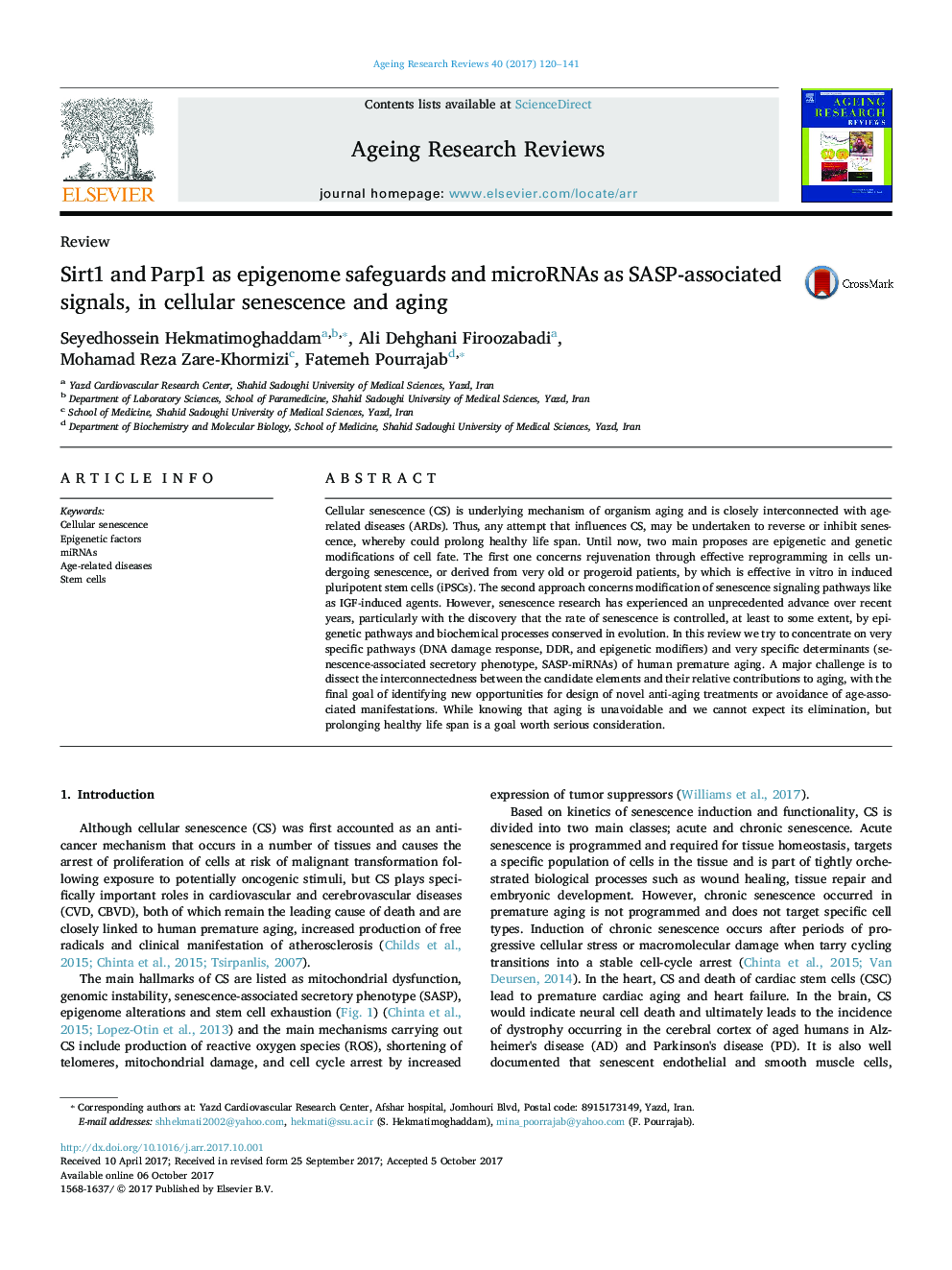| Article ID | Journal | Published Year | Pages | File Type |
|---|---|---|---|---|
| 5500575 | Ageing Research Reviews | 2017 | 22 Pages |
Abstract
Cellular senescence (CS) is underlying mechanism of organism aging and is closely interconnected with age-related diseases (ARDs). Thus, any attempt that influences CS, may be undertaken to reverse or inhibit senescence, whereby could prolong healthy life span. Until now, two main proposes are epigenetic and genetic modifications of cell fate. The first one concerns rejuvenation through effective reprogramming in cells undergoing senescence, or derived from very old or progeroid patients, by which is effective in vitro in induced pluripotent stem cells (iPSCs). The second approach concerns modification of senescence signaling pathways like as IGF-induced agents. However, senescence research has experienced an unprecedented advance over recent years, particularly with the discovery that the rate of senescence is controlled, at least to some extent, by epigenetic pathways and biochemical processes conserved in evolution. In this review we try to concentrate on very specific pathways (DNA damage response, DDR, and epigenetic modifiers) and very specific determinants (senescence-associated secretory phenotype, SASP-miRNAs) of human premature aging. A major challenge is to dissect the interconnectedness between the candidate elements and their relative contributions to aging, with the final goal of identifying new opportunities for design of novel anti-aging treatments or avoidance of age-associated manifestations. While knowing that aging is unavoidable and we cannot expect its elimination, but prolonging healthy life span is a goal worth serious consideration.
Related Topics
Life Sciences
Biochemistry, Genetics and Molecular Biology
Ageing
Authors
Seyedhossein Hekmatimoghaddam, Ali Dehghani Firoozabadi, Mohamad Reza Zare-Khormizi, Fatemeh Pourrajab,
